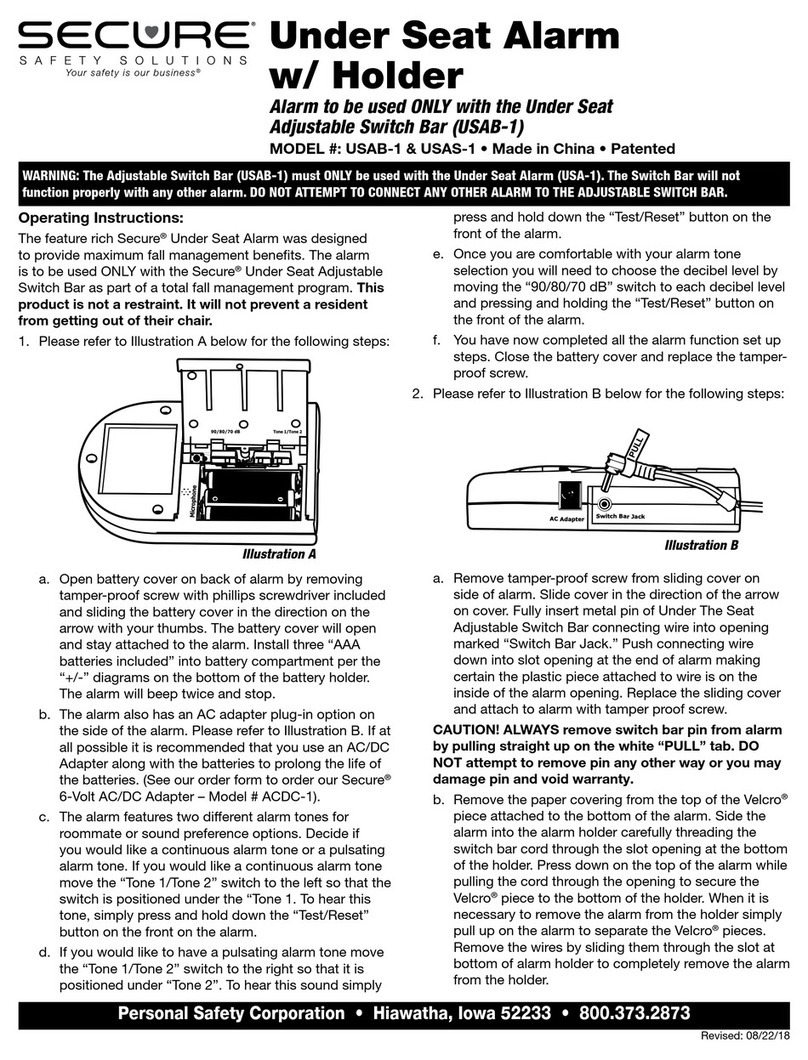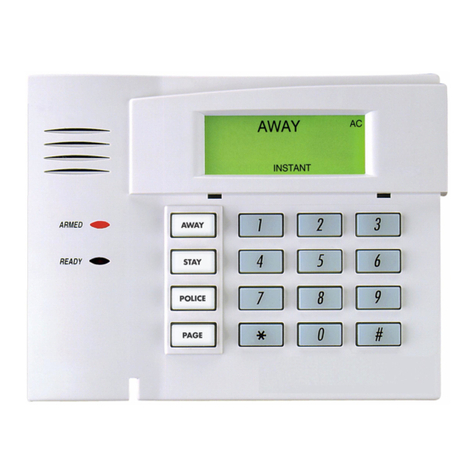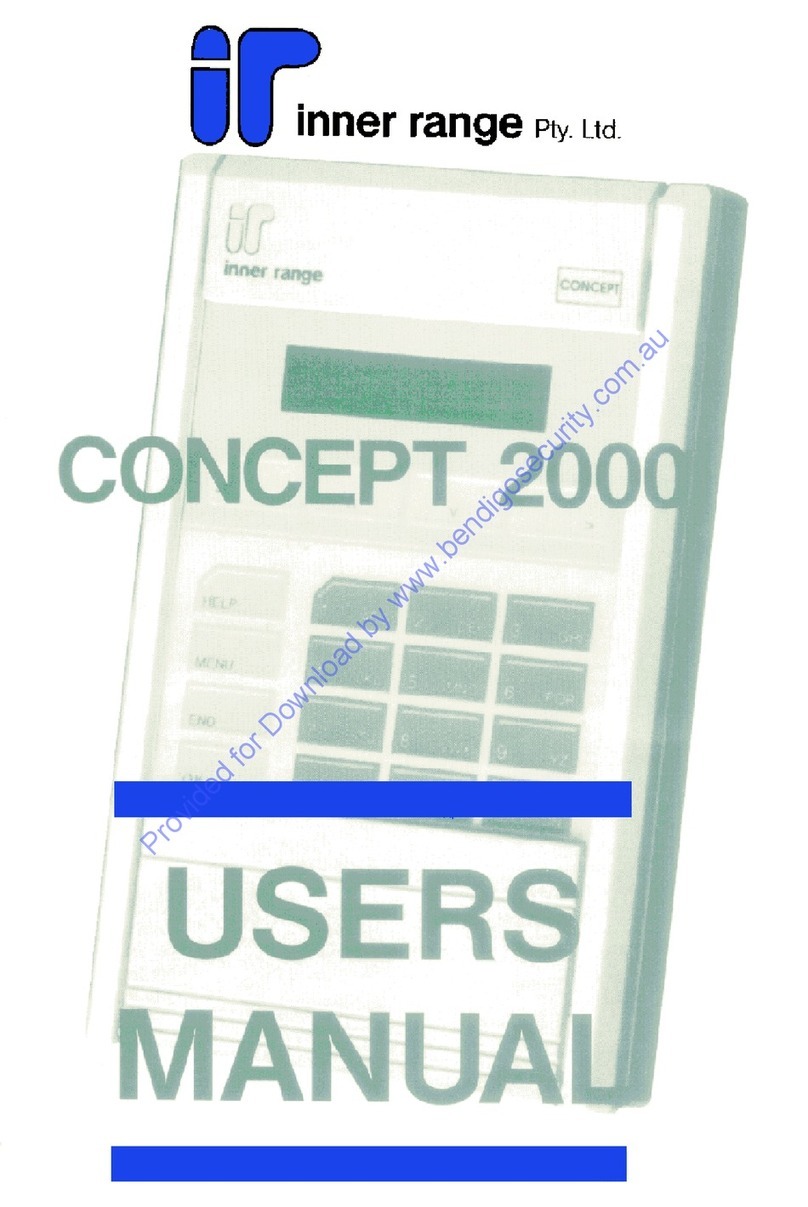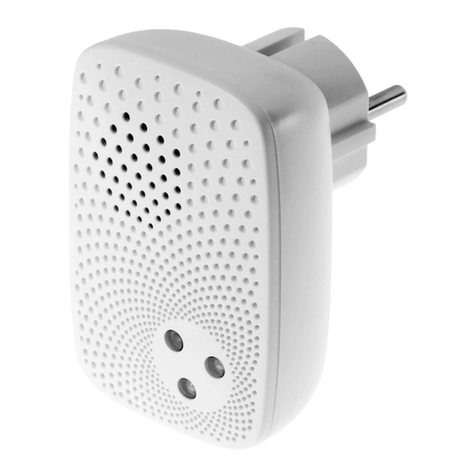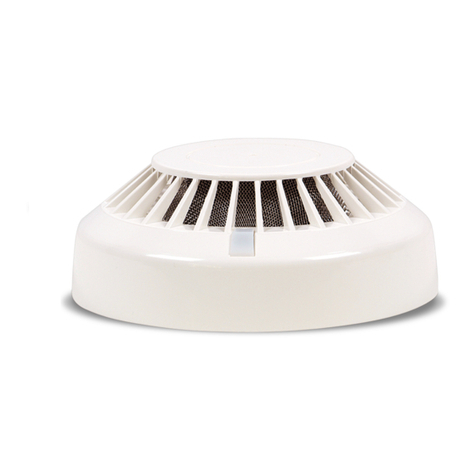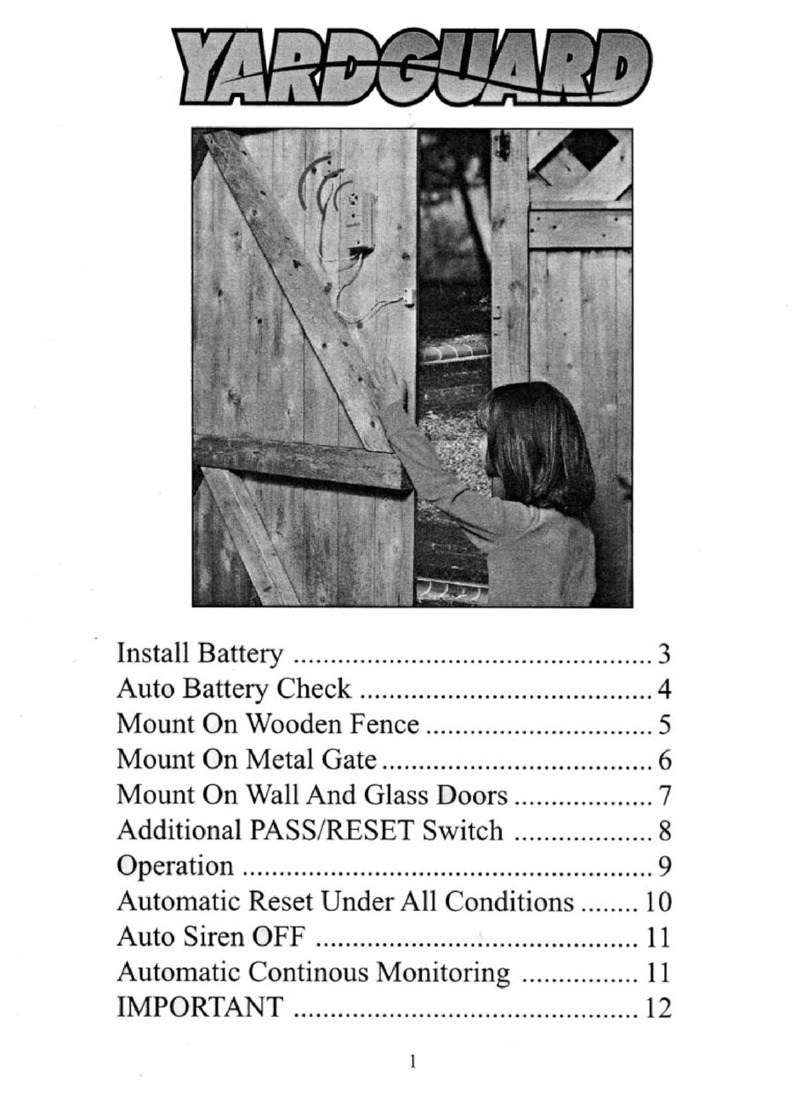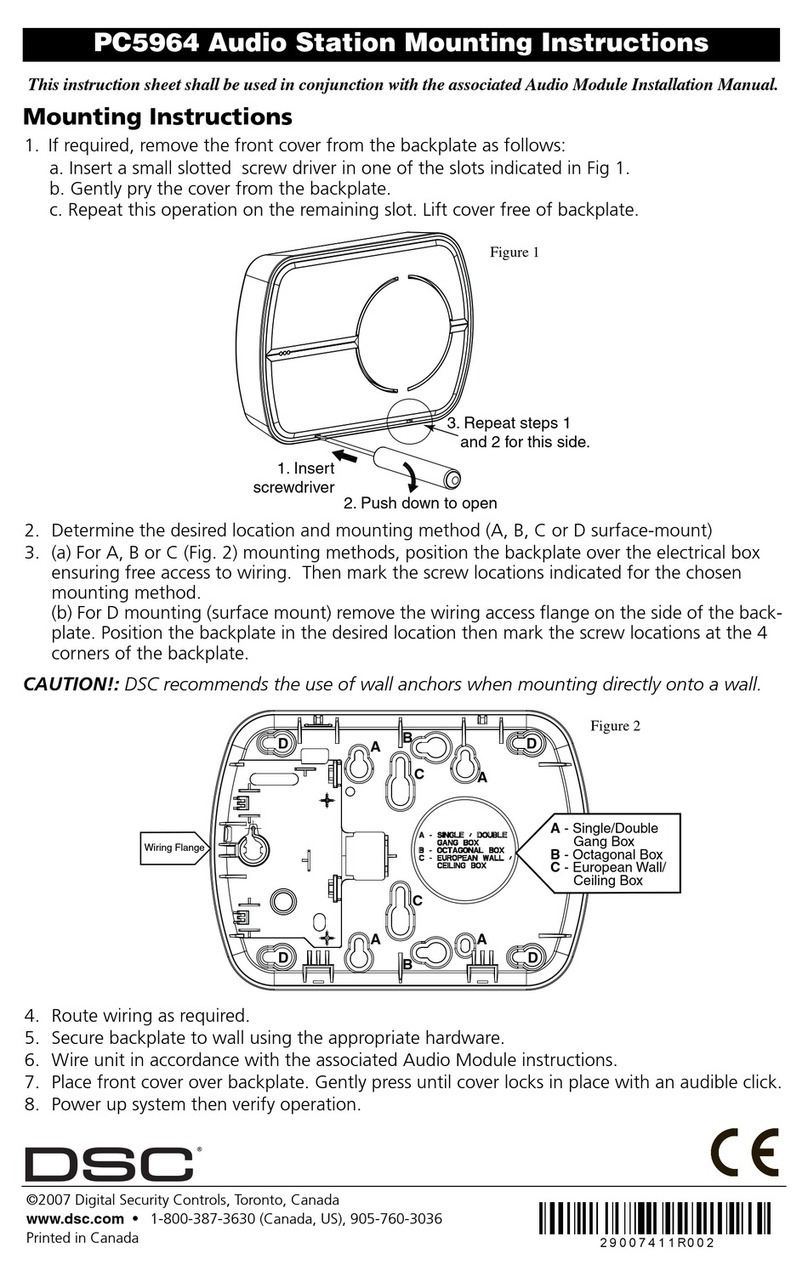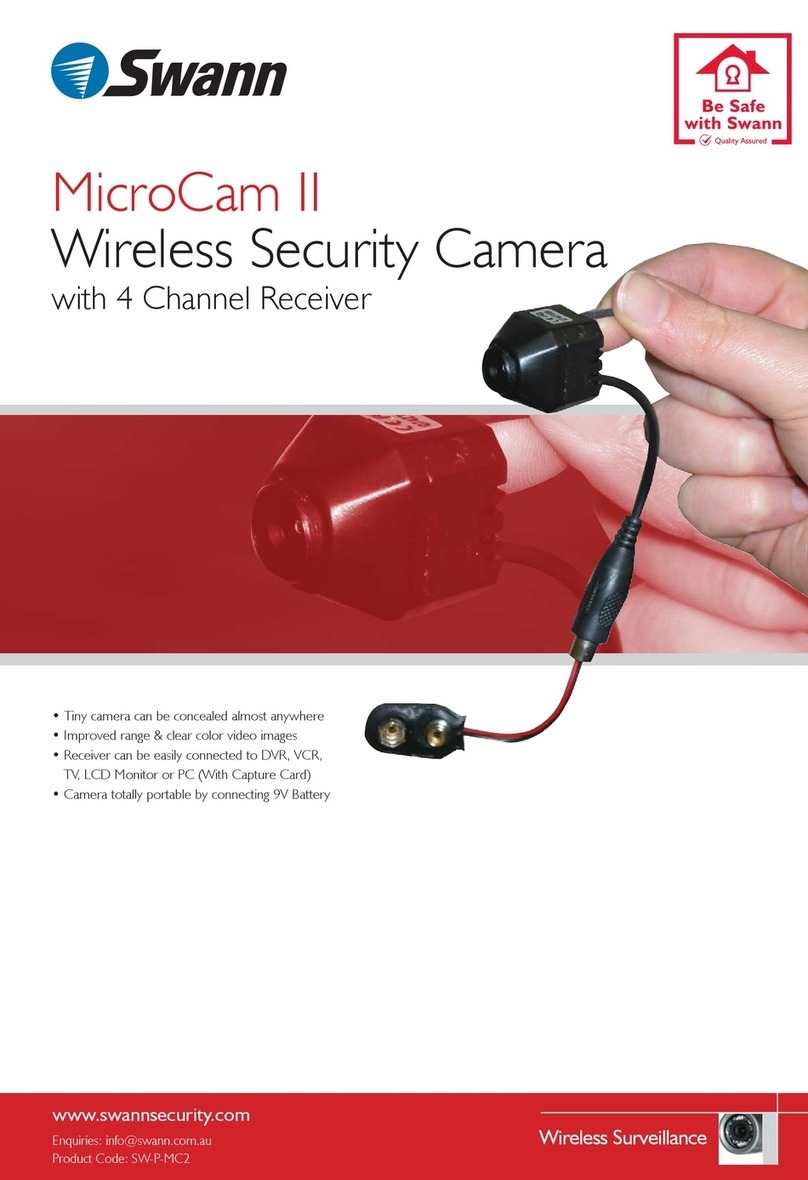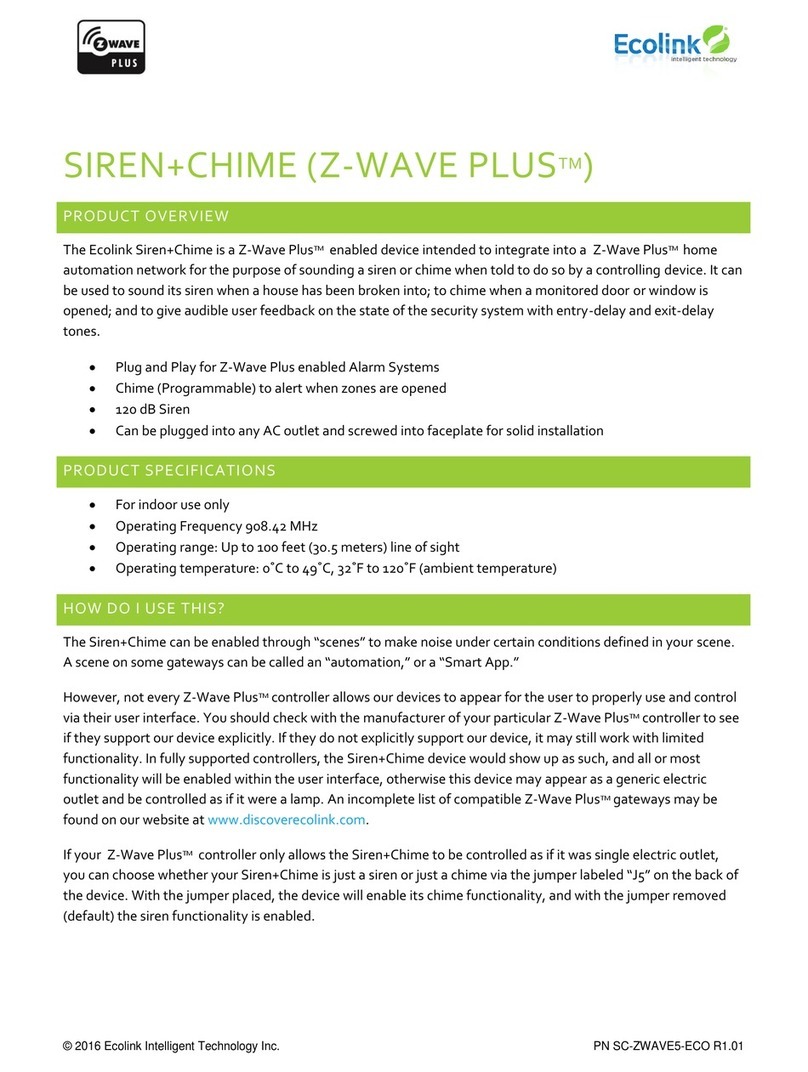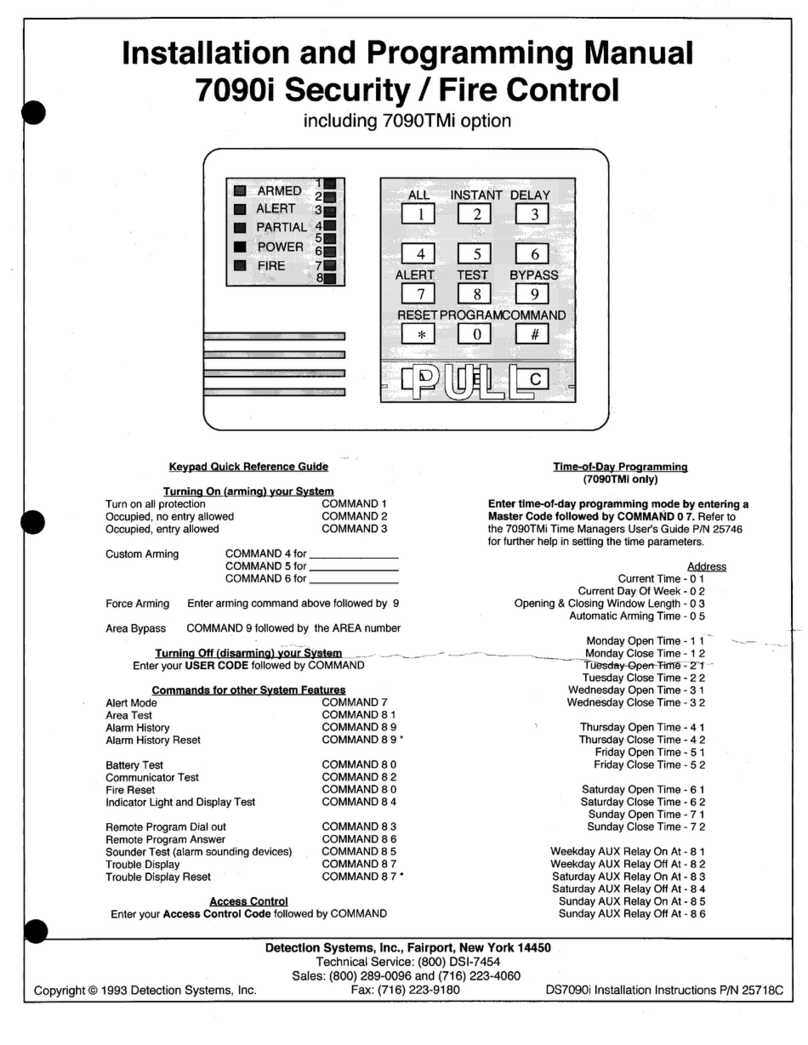> 1,6 s
> 1,6 s
within
20 s
within
20 s
This function serves to transmit the coding of a
wireless transmitter to the alarm indicator.
1. Press button 0 and button 1 simultaneously
until both LEDs blink. If you want to cancel the
teach-in process, briefly press the button 0.
2. Press button 1; now LED 1 blinks.
3. Press the button of the wireless transmitter
which you want to use to acknowledge the
alarm signal within 20 seconds until LED 1 of
the alarm indicator lights up. After approx. 3
seconds, the alarm indicator switches to
"ready for operation".
If there is no input within 20 seconds, the
alarm indicator switches automatically to
"ready for operation".
You can save at most four send codes. If you
teach in more transmitters, the oldest code is
overwritten.
In case a window handle contact that was already
taught in issues an alarm, the teach-in process
cannot be activated.
1.
Memorizing the code of an
acknowledgement transmitter
This function serves to transfer the coding of the
window handle contacts to the alarm indicator.
1. Press button 1 and button 0 simultaneously
until both LEDs blink. If you want to cancel the
teach-in process, briefly press the button 0.
2. Press the button on the window handle
contact within 20 seconds. If there is no input
within 20 seconds, the alarm indicator
switches automatically to "ready for
operation".
If the coding was transferred, LED 1 blinks for
approx. 3 seconds. Afterwards, the alarm
indicator changes its status to "ready for
operation".
Repeat this procedure with every window handle
contact.
In case a window handle contact that was already
taught in issues an alarm, the teach-in process
cannot be activated.
Memorizing the code of a window
handle contact RTS26
> 1,6 s
3s
3s
Window handle contact RTS26
Start-up the Alarm annunciator
1. Plug the alarm annunciator
into any wall outlet, you can
hear an acknowledgement
signal.
2. Teach the codes of the window handle
contacts into the alarm indicator (see chapter
"Teaching in the window handle contact
RTS26").
3. Activate the alarm function (see chapter
"Activating/deactivating the alarm function").
Caution: Make sure that there is no interference
with the wireless connection. Do not mount the
device in a distribution box, metal casings or in
direct proximity to large metal objects.
If the window handle contact detects a
movement of the window handle, a radio
message is sent to the alarm indicator and an
alarm sound is emitted for approx. 3 minutes.
This alarm signal can be turned off directly on the
alarm indicator or with an additional wireless
transmitter.
The outlet cannot be switched wireless and may
instead be used as a connection for electrical
devices (230 VAC, 50 Hz, up to 16A).
The alarm sound can be turned off with the
buttons 1 or 0 or with the acknowledgement
transmitter.
After an alarm message, the alarm
indicator is deactivated for 5 minutes. The LEDs
blink alternately. Further alarms will not be
signalled during this time.
In order to cancel this status, turn the alarm
function OFF once and then ON again.
Attention!
> 1,6 s
within
20 s
within
20 s
within 20 s
This function serves to transmit the Easywave
send code A1 (ON) to an Easywave wireless
receiver. This way, e.g. a light source or another
electrical appliance can be activated in case of
an alarm.
Transmit the send code of the RTRP02 to the
receiver:
1. Press button 0 and button 1 simultaneously
until both LEDs blink. If you want to cancel the
teach-in procedure, briefly press button 0.
2. Ready the wireless receiver for the teach-in
process. Within 20 seconds, press the button
1 on the alarm indicator until LED 1 blinks.
3. Press the button 1 again within 20 seconds;
LED 1 is lit. The send code A is transmitted for
3 seconds. Afterwards, the alarm indicator
changes its status to "ready for operation".
If there is no input within 20 seconds, the
alarm indicator switches automatically to
„ready for operation".
After a RESET, send code A can no
longer be sent automatically in case of an alarm.
Repeat the steps 1 to 3 in order to reactivate the
function. The wireless receiver does not have to
be set to teach-in mode for this purpose.
Attention!
This function serves to transmit the Easywave
send code B2 (DOWN) to an Easywave wireless
receiver. This way, e.g. a shutter can be closed or
another electrical appliance can be activated in
case of an alarm.
Transmit the send code to the receiver as
described in the following:
1. Press button 0 and button 1 simultaneously
until both LEDs blink. If you want to cancel the
teach-in process, briefly press the button 0.
2. Ready the wireless receiver for the teach-in
process. Within 20 seconds, press the button
0 on the alarm indicator until LED 0 blinks.
3. Press the button 0 again within 20 seconds;
LED 0 is lit. The send code B is transmitted for
3 seconds. Afterwards, the alarm indicator
changes its status to "ready for operation".
If there is no input within 20 seconds, the
alarm indicator switches automatically to
„ready for operation".
After a RESET, send code A can no
longer be sent automatically in case of an alarm.
Repeat the steps 1 to 3 in order to reactivate the
function. The wireless receiver does not have to
be set to teach-in mode for this purpose.
Attention!
Switch on lighting Close a shutter
3s 3s
> 1,6 s > 1,6 s
> 1,6 s
1
L10A
1
L10A
Transmission code A
is transferred
Transmission code B
is transferred
within
20 s
or
or
Acknowledge the alarm
Switch off the alarm function
Switch on the alarm function
An alarm message can only be received if the
alarm function is activated and if the coding of a
window handle contact was taught into the alarm
indicator.
After a power failure, the alarm function is
activated automatically.
Aktivate/deactivate the
alarm function
Button 0
Alarm
OFF
OFF
Button 1
Alarm
ON
ON
> 1,6 s
> 1,6 s
Keep button 1 depressed until the two status
LEDs turn red.
Keep button 0 depressed until the two red status
LEDs go off.
